Victoria Sadler's Blog, page 20
March 30, 2014
Veronese Exhibition at National Gallery a Glorious Success

Image credit: Paolo Veronese (1528-1588)The Conversion of Mary Magdalene, about 1548 Oil on canvas 117.5 × 163.5 cm © The National Gallery, London
In Veronese: Magnificence in Renaissance Venice, the National Gallery has brought together a vast and extraordinary collection of work from this Renaissance Master, one of the most influential artists of the 16th century.
With over 50 paintings, many of which are enormous in size, the National has had to completely overhaul its own permanent collection with seven large rooms emptied of their contents to be replaced with these exquisite, rich masterpieces. And the result is a resounding success.
Every single Veronese on show is simply superb, making this one of the best art exhibitions I have seen in recent years.
On his arrival in Venice, Veronese (whose real name was Paolo Caliari - known as Veronese as he heralded from Verona) quickly caught the eye of Titian and Titian's influence can certainly be seen in the rich, bold colour palettes and the huge canvasses.
The Conversion of Mary Magdalene is a perfect example of this with its bright blues and pinks, and its canvas filled with figures, crammed with detail and variety.
The influence of his other contemporaries is also evident in his works, such as in The Temptation of Saint Anthony where the male body has the powerful, muscular physique that we would recognise from Michelangelo. But Veronese had extraordinary diversity in his talents and his unique take on composition and colour is so beautifully reflected here.
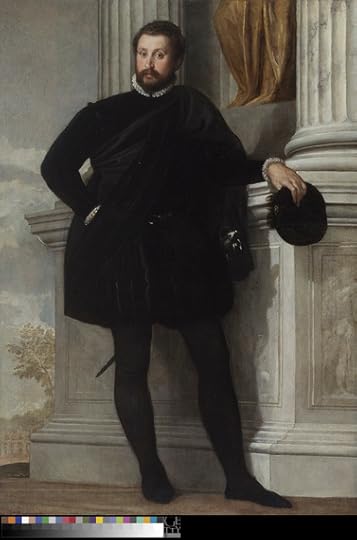
Image credit:Paolo Veronese (1528-1588) Portrait of a Gentleman, about 1560-5 Oil on canvas 192.1 × 134 cm © The J. Paul Getty Museum, Los Angeles
Like many other artists, Veronese too was commissioned to paint the aristocracy of his time but his paintings of the Venetian elite are bold and challenging.
Shown beautifully in the exquisite, Portrait of a Gentleman, Veronese embraced a cool monochrome palette, which is quite startling when seen alongside his other works. Also there is much emotional depth to these portraits, such as here where the patron seems lost in thought.
Nor did Veronese limit himself to portraits or works based on religious texts. He also painted works based on mythology as well as historical scenes, such as The Family of Darius before Alexander. Here, as elsewhere, Veronese set himself these huge challenges of filling the scenes with characters, figures, all with different intentions and different poses, and with such detail in fabric and features.
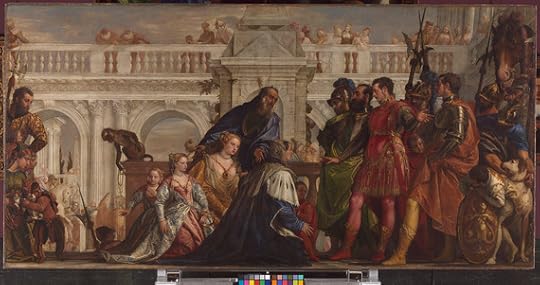
Image credit: Paolo Veronese (1528-1588) The Family of Darius before Alexander, 1565-7 Oil on canvas 236.2 × 474.9 cm © The National Gallery, London
Veronese weaves so much into his paintings. So often in scenes such as The Martyrdom of Saint George and The Finding of Moses, Veronese will also have cattle and horses peering in from the sides - animals that other painters would put front and centre to show off their talents, Veronese executes perfectly but adds simply as accompaniments.
And his construction of paintings is so interesting, ahead of his time almost. Such as in The Dream of Saint Helena (1570). There are two versions of this same scene in the exhibition, hung side-by-side, and it offers a great opportunity to see how Veronese took varied approaches to the same subject.
In the version from the National Gallery's own permanent collection, Catherine, dressed in plain clothes, is asleep in the bottom right of the canvas, with the angels showing her the Holy Cross in the top left of the painting. In the centre? Simply the plain beige background.
It is such a contrast to the version owned by the Vatican, which is hung nearby, where Catherine sits in the centre of the painting, wearing rich fabrics and even a crown.
This is the most significant collection of Veronese's works ever to be displayed in the United Kingdom. Veronese may not be a household name like High Renaissance artists such as Leonardo, Michelangelo and Titian, but one visit to this exhibition shows how much he deserves his place alongside these Masters.
National Gallery, London
To June 15, 2014
Published on March 30, 2014 14:41
March 26, 2014
James Rhodes' One Man Classical Music Revolution Gathers Pace
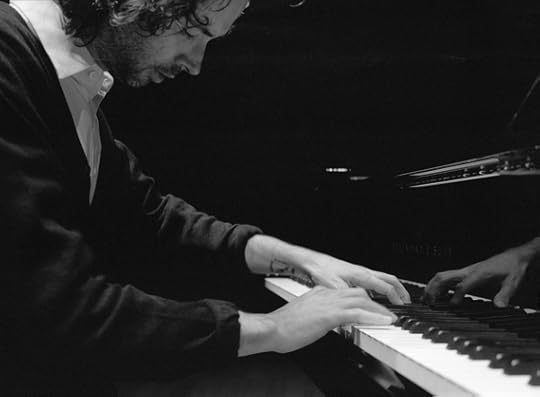
Photo: James Rhodes © Kate Baker
It's not often that I get excited about a classical music concert. Too often they're staid and aloof. But it's all so different when James Rhodes is playing and this week sees him kicking off a packed schedule with a string of shows at Soho Theatre.
For those of you who don't know who James is, he's a classical music pianist working hard to challenge the conventions in his industry, hence this gig being at Soho Theatre rather than the Royal Festival Hall. And hence James bashfully sauntering on to the stage in his jeans and cardigan rather than white tie and tailcoat.
The challenge to conventions is not superficial either. James' setlists have always taken the style of a mixtape, a collection of works that James feels, together, reflect a theme, luring audiences in with tasters and samples rather than overwhelming them for hours with a single symphony.
And James' USP, his chatty informal introductions for each piece and composer, is as much a part of the show as the music. After the first piece, Chopin's Nocturne in C Minor, James got up, bashfully hung his head, then with a twinkle in his eyes announced that his setlist for this year was when love goes wrong "or the venereal years, as I like to call them."
Sadly, as James wryly highlighted, too many great composers spent most of their lives in profound poverty and often suffering from syphilis and gonorrhoea, afflictions that not only shortened their lives but left some of them with a restricted ability to play.
Certainly the pieces were more reflective, more serious that the James Rhodes' mixtape of love that was his bright sparky setlist of last year. But as well as a change in tone, the pieces brought out James' profound work ethic.
The guy is talented and charming, for sure, but he is no gimmick. The set-list of Chopins , Schuberts and Blumenfelds was technically incredibly challenging and shows how hard James works at his craft.
Schubert's Piano Sonata in A Major had moments of dramatic intensity and then bursts of real frivolity and joy. James brought out the whole range, almost cacophony, of emotions in the piece beautifully.
The highlight for me was Blumenfeld's étude pour la main gauche. A technically difficult piece as it is, being that it is a piece to be played solely with the left hand across the full range of the piano. But James hand danced across the whole range of piano keys, really bringing to life the ripples of melody rising up into a triumphant and heartfelt finish.
James, no doubt, would be portrayed as the bad boy of classical music by his more austere peers, the l'enfant terrible, if he weren't so unassuming and self-effacing. And if he weren't just so damn funny. As he explained to the audience just how widespread STDs were amongst his heroes of classical music, he took the opportunity to point out there's a clinic nearby, for those in need. "I think it if you turn left out of the theatre, it's on the second road to your right. Beak Street... A friend told me."
James' growing success, for me, isn't reflected in his swelling numbers of followers on Twitter or his celebrity friends but in the demographic of his audience. In the year since I last saw him, James' career has really sky-rocketed with programs on Channel 4 and a book in the works so when I heard the shows had sold out, I had half-feared the audience would be made up almost entirely of fangirls hoping to catch a glimpse of James' most adored famous friend.
Luckily I was wrong.
It was just so heart-warming, almost exciting, to see such an enthusiastic , varied crowd packed in to the basement cabaret theatre to listen to a classical music pianist. Young-old, male-female. Even a few OAPs. Just people you'd never see in traditional classical music venues which have degenerated into the sole preserve of the wealthy and the white.
Classical music is facing real challenges in attracting new audiences, getting a broader demographic excited and moved by what it has to offer - and it has so much to offer. It's just so sad (though understandable) that people are turned off by its intimidating, expensive, exclusionist outlook. Classical music isn't scary or obscure. It can move you as much as The Verve and can make you smile as much as Kylie (probably not in that way).
Not only does James have the right attitude in breaking down barriers to classical music but he also has the talent. Really, an hour listening to him play is exhilarating, emotional and entertaining. You won't regret it.
Soho Theatre, London
To March 29, 2014
Published on March 26, 2014 03:52
March 25, 2014
Theatre Review: Other Desert Cities, The Old Vic
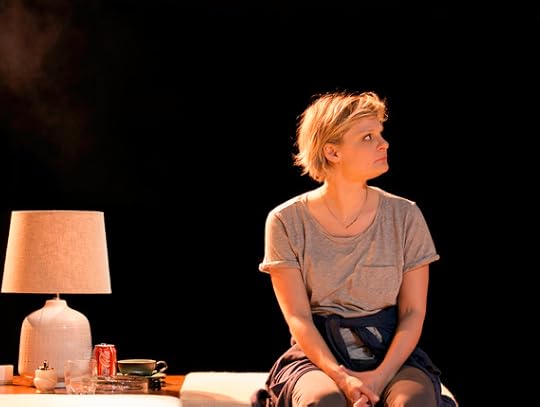
Photo ©Martha Plimpton (Brooke Wyeth) in Other Desert Cities at The Old Vic Photo by Johan Persson
Other Desert Cities is a superb, viciously funny but dark family drama that is the perfect start to The Old Vic's exciting in-the-round season.
Set in the desert city of Palm Springs, California in 2004, Other Desert Cities is a story about a family, the Wyeths, that is riven with conflict, divided in every way. The parents Lyman (Peter Egan) and Polly Wyeth (Sinéad Cusack) are veterans of the Republican party, deeply conservative in outlook, and a complete antithesis to Brooke (Martha Plimpton), their eldest daughter, a writer who is visiting for Christmas from her home in New York.
Scruffy, liberal and recovering from a nervous breakdown, Brooke has thrown all her energies into writing her new novel, one that she wants to share with her parents, as well as her brother Trip (Daniel Lapaine) and her aunt Silda (Clare Higgins) (who, herself, is fresh out of rehab).
Only the book she written is no gift. Instead it is a memoir, an exposé, on the darkest secret her family holds - the suicide of her older brother Henry some 30 years before following his involvement in a left-wing radical movement that bombed an army recruitment centre.
Written by Jon Robin Baitz, this play, a drama with a sting in its tail, was a finalist for the 2012 Pulitzer Prize for Drama - and rightly so. The pacing is tight and holds your attention completely.
And it's not just the writing that impresses - the acting from each member of the stellar cast is superb.
On paper, roles such as 'alcoholic out of rehab,' 'Republican wife modelled on Barbara Bush,' and 'liberal leaning manic depressive writer' could all be clichés but here, each character is multi-layered, complex and as self-deceiving as they are deceitful.
Sinéad Cusack is outstanding as Polly, the mother holding herself and her family together. Her ability to be simultaneously loving and poisonous is as scary as it is splendid.
Martha Plimpton, in her West-End debut, gives a passionate and weighty performance as Brooke, the firestarter as desperate for her parents' validation as she is to provoke them.
Lindsay Posner's staging, with its close-quarters verbal sparring, is served superbly by the reconfiguration of the Old Vic into an in-the-round setting.
As soon as you walk in to the auditorium, the new layout grabs you. It is wonderful, and clearly a lot of effort has gone into the transformation as the changes weave seamlessly into the Old Vic's existing décor and structure.
However those up in the Lilian Baylis circle, up in the gods, are likely to miss out on a lot of the benefits to this intimate set-up, being so far removed from the heart of the action.
The Old Vic works hard to obtain corporate sponsorship and other financial support to support their work but with the premium seats in the stalls priced at £75 and £53, those seats that get the best out of this new configuration, it's clear that the challenges that exist in bringing new audiences, a broader demographic, in to theatre remain.
The Old Vic, London
To May 24, 2014
Published on March 25, 2014 06:39
March 19, 2014
William Kent: Designing Georgian Britain
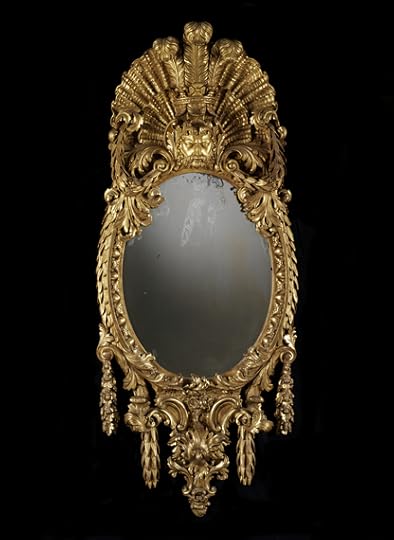
Photo: Mirror attributed to William Kent, probably for the White House, Kew. Carving attributed to John Boson. Gilt pine, mirror glass (1733-34) © Victoria and Albert Museum, London
In this tercentenary of the Hanoverian accession to the throne, the V&A has brought together an extraordinary body of work to celebrate that era's most influential designer and architect - William Kent. Kent is not a man that is spoken about widely but his influence continues to be profound. This fascinating and evocative exhibition goes a long way to redressing that imbalance.
Queen Anne died in 1714, leaving no obvious heir, and the search for a specifically Protestant heir proved unsuccessful so the monarchy turned to distant relatives from the Principality of Hanover (the eventual George I was the 49th in line to the throne at the time he was made King).
As George I took to the throne, there was a general desire to have a fresh start for Britain with new ideas. Kent fit the bill perfectly and his style has left its mark to this very day.
William Kent was, by any standard, a polymath. Painter, sculptor, architect, interior decorator, furniture designer, illustrator, costume and theatre designer, landscape designer... The range of Kent's talents was amazing and the exhibition shows just how much he excelled at each.
It's a reflection of how well this exhibition is curated that it doesn't throw all these talents at you, overwhelming you. Instead worlds, spheres showcasing these achievements are created - homes, urban design, gardens - and the exhibition creates a path that leads you through each in turn.
The interior design section showcases Kent's revolutionary design, drawn heavily from Italian Baroque art. The richly gilded chairs upholstered in jewel-coloured velvets, ornately marbled tables, heavily carved mahogany wood... It's a style that's eye-wateringly bling-tastic by today's standards but palatial homes and country estates demand statement furniture and large-scale interior design - and Kent knew how to supply that.
The Kentian style was adopted by many of the most powerful patrons of Georgian Britain who, in turn, secured Kent important Royal commissions, bringing him to public attention.
One section of the exhibition is devoted to Kent's designs for the new Royal Family including the Prince of Wales's Royal Barge (1732), Queen Caroline's Library at St James' Palace (1736-37) and the Hermitage in Richmond Gardens (1730-31).
After the interior design, the exhibition weaves its way into urban design examining Kent's projects for the redesign of Georgian London. On display are architectural renderings and elevations for the facade of Horse Guards (1753) which show Kent's lasting impact on the appearance of London today.
Other architectural projects were never realised including the proposals he submitted for a new House of Parliament (1733-40) and interiors for the House of Lords at Westminster (1735-36), designs for which are on display.
The personal highlight for me was the section on gardens at the close of the exhibition.
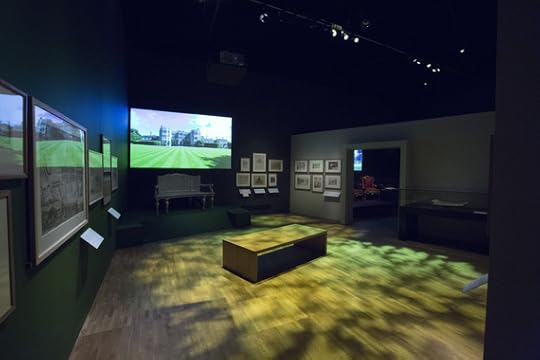
Photo: Installation image of William Kent: Designing Georgian Britain (c) Victoria and Albert Museum, London
It's so important for museums and galleries to engage as wide a demographic as possible for their shows and to do that, innovative methods have to be employed. With the Science Museum, the V&A has been at the forefront in utilising talents from other areas of the creative arts and this innovative approach pays dividends here.
Using lighting design talents from theatre as well innovative sound, an evocative representation of English gardens has been created. With birdsong coming through the speakers and dark mossy green walls, stills of Kent's landscaping from across England's country estates such as Stowe and Holkham Hall are projected on to the walls as the effect of sunlight filtering through leafy branches illuminates the room.
Garden seats dotted around, visitors can sit down and transport themselves to the beautifully landscaped lawns dotted with temples, obelisk, man-made lakes and woodland paths - all worlds away from the chaos and urban landscape of modern London.
It also gives the opportunity to display how much Kent embraced the poetic idealism of the English countryside. A versatile man in terms of influence as well as talents, Kent's landscapes were not drawn from overseas but instead looked to show England at its very best.
Victoria and Albert Museum, London
To July 13, 2014
Published on March 19, 2014 13:27
Angela Lansbury Brings the Joy to Blithe Spirit
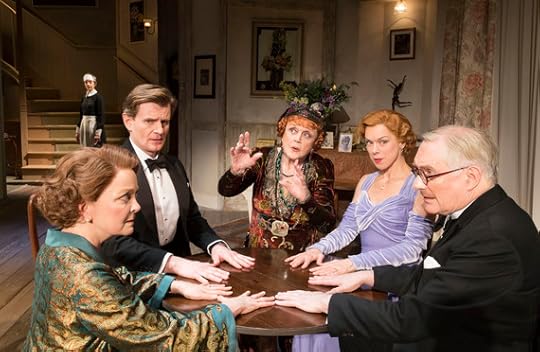
Photo © Charles, Edwards, Angela Lansbury, Janie Dee, Simon Jones and Serena Evans in Blithe Spirit Photo Johan Persson
Angela Lansbury is a living legend of the stage and screen and though she doesn't play the main character in this flawed but enjoyable production of Noel Coward's Blithe Spirit, her wit, charm and comic timing is more than enough to ensure you leave the theatre smiling.
Charles Condomine (Charles Edwards) is a novelist and, largely as a way of doing some research for his new book, he and his wife Ruth (Janie Dee) invite an eccentric medium Madame Arcati (Angela Lansbury) to hold a séance at their house. But what was meant as a bit of harmless fun backfires when Arcati inadvertently summons the ghost of Charles's first wife Elvira (Jemima Rooper) who has been dead for seven years.
Angela Lansbury is the star attraction but there is quality right through the cast. Charles Spencer is excellent as the man stuck between his feuding wives - one dead, one alive. Those who caught him in Strange Interlude or This House, both at the National, or in the Pravda excerpt at the NT50 Anniversary Gala will remember his brilliant comic timing and all of that is on show here again.
Janie Dee also shines as his second wife, Ruth. An Olivier award winning actress, she is perfect as the wife trying to keep up appearances as her husband unravels with the return of his first wife. Her talents really shine with the wonderful Coward dialogue and her delivery is so sharp and punchy that the laughs just roll almost every time she speaks - a wonderful example being, on enquiry where Elvira's ghost is, she gets the biggest laugh of the night for replying with "My husband has driven her into Folkestone."
The play itself is showing its age however. Its politics seem quite borderline in this day and age. A comedy about a man desperately trying to escape his nagging and controlling ex-wives may sound like the start of a bad Les Dawson joke but Noel Coward's dialogue is sharp enough and witty enough to just about keep this comedy out of a gender minefield.
The set design is also a little jarring. The contemporary interior with its modern art, Laura Ashley sofas and John Lewis cushions doesn't sit well with the 1940s dialogue, delivery style and costumes.
But all of this, I suppose, is a little irrelevant given that this show comes across as little more than a vehicle for Angela Lansbury. Certainly her every move was greeted with adoration from the audience. As soon as she stepped onto the stage, the crowd, in a very un-British display of adoration, gave Lansbury a rapturous round of applause even before she'd said a word.
But there's no doubt that the legend delivers. Angela Lansbury's performance as the eccentric Madame Arcati is spot on. Her melodramatic trances and sprightly, peculiar dancing are all played for laughs but she plays Arcati completely straight, as a woman who completely believes in her talents. Others have played Arcati as a woman who knows she's a fraud but not Lansbury - in her hands, the decision to play as a woman who believes unequivocally in her talents plays off handsomely.
Blithe Spirit isn't Coward's best and this production wasn't without its flaws but the audience all left full of smiles having seen the woman they all came to see and it's hard to knock that. It's not ground-breaking or challenging but Blithe Spirit is a warm, feel-good piece of theatre.
Gielgud Theatre, London
To June 7, 2014
Published on March 19, 2014 10:18
March 13, 2014
Female Artists Front and Centre at the Affordable Art Fair
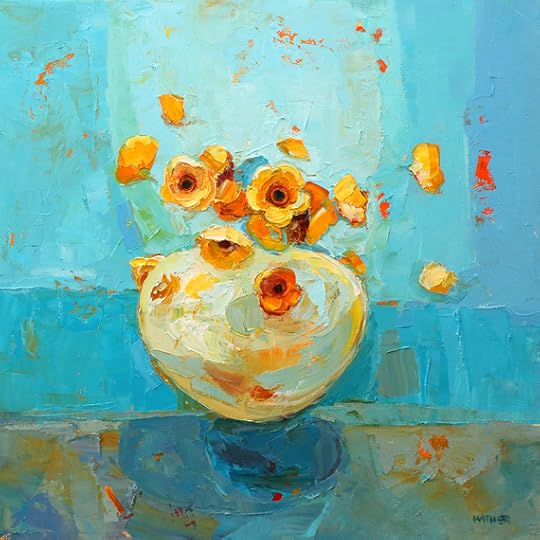
Picture © "A fine light" by Kirsty Wither. Oil, 30x30xm, £1,500 with Cameron Contemporary Art at the Affordable Art Fair, Battersea
Saturday 8 March marked International Women's Day, and this year the Affordable Art Fair is using the tie-in to showcase some of the industry's brightest female art stars from both the UK and abroad.
Whether it's a captivating photographic fine art print from British photographer, Kirsty Mitchell, or a beautifully intricate illustration from London-based Kristjana S Williams, the work of many talented female artists currently making their mark on the art scene can be snapped up at the Fair.
Famed for its friendly and inclusive atmosphere, the Affordable Art Fair has become something of an institution. The first fair launched in Battersea Park in October 1999 and the event was a surprise success with over 10,000 visitors.
A second event was held in March 2001, also in Battersea Park, where twice the number of visitors arrived. It's been a phenomenon ever since, so much so that the Affordable Art Fair now takes place in cities including New York, Milan, Singapore and Hong Kong.
This March the Fair returns to its original location in Battersea Park for a four-day event with over 100 galleries showing their work. The aim remains though to encourage people from all backgrounds to enjoy and own art, rather than the privileged few, so all pieces for sale will be between £40 and £4,000.
Buying a piece of art though is always a personal choice so if you're new to buying art, where to begin?
Given low interest rates and repeated observations that, for the wealthy, art is very much an investment rather than an aesthetic purchase, there might be the temptation to do the same. My advice? DON'T!! Not, don't buy art - buy it because you like it, rather than for investment reasons.
Identifying new stars is always tricky and if you get it wrong, you'll be left with art that you don't like. There's plenty of art in museums. What you should own is art that you want to see every day.
And different rooms in your home can bring with them different needs. If you have a space on your kitchen wall, put a piece there that you'd love to wake up to every morning, something that nourishes the soul. Whereas the living room or a dining room, a place where you have visitors, might be a more suitable place for the more dramatic piece that you might have your eye on.
Certainly the Affordable Art Fair is aware that buying art can seem a little scary so they've laid on plenty of support for the new buyers such as an art buying guide on their website, the Fair will be staffed by plenty of gallerists (so ask questions!) and a lot of the galleries on show offer payment in instalments.
The choice is so diverse and varied at the art fair that really, you will find something to your taste. And there's a variety of media too with paintings, original artist-made prints, sculpture and photography all covered.
Two pieces that really stood out for me, for completely different reasons were Kirsty Wither's A Fine Light (above) and Kirsty Mitchell's The Queen's Armada (below).
Kirsty Wither is one of the UK's most successful women painters, regularly selling out exhibitions across Britain. Kirsty, who is based in Brighton, paints brightly coloured and textured still lifes, figures and landscapes and A Fine Light I found just a really positive but restful piece. The kind of piece that would make you feel better each time you looked at it.
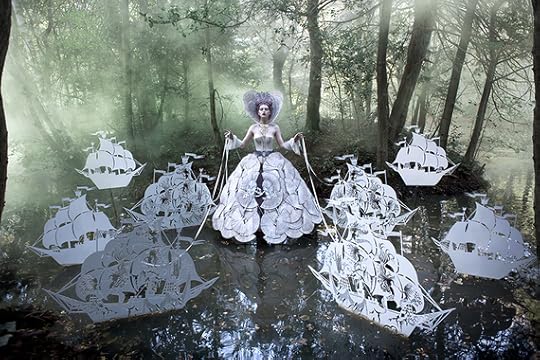
Photo © "The Queen's Armada" by Kirsty Mitchell. Achival pigment photographic print, 67 x 100cm, £2,500 with Mark Jason Gallery at the Affordable Art Fair, Battersea
Kirsty Mitchell's The Queen's Armada I just thought was such a stunning photograph. Incredibly intricate design and detail in the content of the image, then the very bold staging that fills the frame.
The focus on female artists is not superficial either. The Fair is dedicated to supporting established and up-and-coming female artists from all over the world so on Friday March 14th, the Fair will be teaming up with fashion house Gudrun Sjoden, whose spring collection has been entirely inspired by strong, artistic women, and host talks from Susan Mumford, Founder of the Association of Women Art Dealers.
The Affordable Art Fair runs this weekend at Battersea Park but if you miss it, there are other fairs this year. And remember - don't be intimidated by art. Trust your instincts - they're bound to lead you to make the right decision for you.
Affordable Art Fair Dates:
Battersea Park, London March 13 - 16, 2014
Hampstead, London June 12-15, 2014
Bristol 19-21 September, 2014
Published on March 13, 2014 05:30
March 12, 2014
Olivier Nominations Show How Far Apart Theatre Audiences and Critics Are
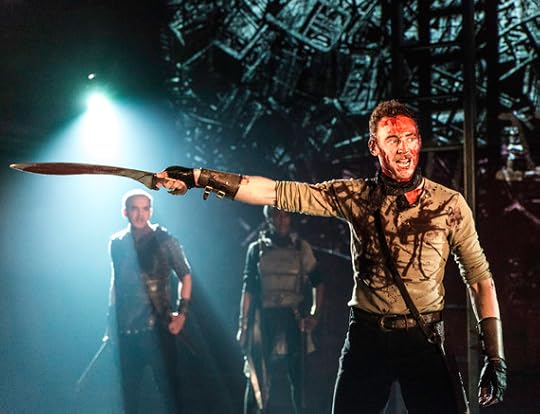
Photo © National Theatre Coriolanus (Tom Hiddleston) Photo by Johan Persson
This week the nominations for the Olivier Awards were announced and as well as the usual controversy over who was (and wasn't) nominated, another interesting observation to be made was the many differences between these nominations, decided by professional panellists, and those of the recent What's On Stage Awards, which are voted for entirely by the public.
The What's On Stage Awards (WOS Awards) saw household names such as David Walliams, Helen Mirren and Daniel Radcliffe take home the main awards, but none of these can be found in the Olivier nominations (Helen Mirren won the Olivier for The Audience last year).
Similarly, the productions that were led by household names such as Macbeth at Trafalgar Studios, and Michael Grandage's A Midsummer Night's Dream had multiple nominations across the categories for the WOS Awards. Not so in the Oliviers which gave more recognition to productions such as Richard Eyre's Ghosts and the National's The Amen Corner.
It's the Best Actor award that really highlights what drives audiences to theatres. Now given that Rory Kinnear (Othello) is the only nominee that appears in both the Olivier and the WOS Awards nominee list, that might seem an odd statement but what's clear from the full list of WOS nominees is that celebrity counts.
Daniel Radcliffe won the WOS Award (with 37% of the vote) beating off James McAvoy who was a runner-up for his performance in Macbeth, as well as Lenny Henry and Ben Whishaw. None of these are nominated for the Olivier. Instead Jude Law is nominated for Henry V and Tom Hiddleston for Coriolanus.
Now this omission may seem bizarre considering how famous and popular Jude Law and Tom Hiddleston are, but this is to do with timing - nominations for the WOS Awards closed at the end of November and both Henry V and Coriolanus opened in December. I have no doubt both would have been nominated for audience-based awards if they had qualified. (Similarly I expect Matt Smith would have been attracted a huge audience vote for his performance in American Psycho , which also opened in December).
As it is, Best Actor is a phenomenally tough category, even more so when you consider there was no room (in either list of nominations) for either Adrian Lester's wonderful performance in Othello or for Chiwetel Ejiofor for his portrayal as the doomed Congolese independence leader Patrice Lumumba in A Season in the Congo.
But this swell of audience interest in seeing actors they recognise is an important factor in drawing audiences in, especially to plays they might not be interested in otherwise.
But the impact of the casting of more well-known actors really shows up in the musical categories. The Scottsboro Boys was a brilliant and innovative production at the Young Vic, a satirical musical based on the tragic story of racial injustice to nine black men in Scottsboro USA in 1931. A single nomination in the WOS Awards for Best Supporting Actor in a Musical (Colman Domingo), it rightly received six nominations at the Oliviers across a raft of categories including choreography, acting and direction.
The Scottsboro Boys had no celebrities in its line-up so it just didn't attract the audience that vote in the WOS Awards. Indeed, Colman Domingo received the lowest number of votes in his category at the WOS Awards, losing to Stephen Ashfield from the incredibly popular The Book of Mormon.
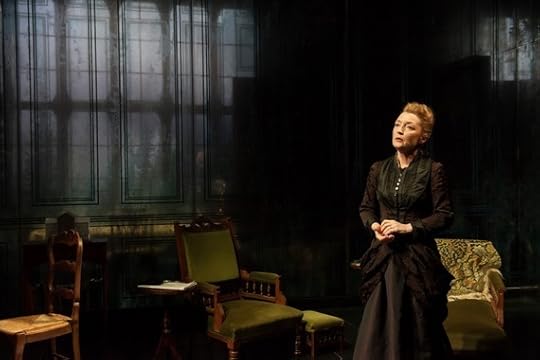
Photo © Almeida Theatre Ghosts - Lesley Manville by Hugo Glendinning
Plenty of observations have been made on the trends that are reflected in the nominations.
It hasn't been a great year for new plays. Chimerica stands out as a glorious exception but it's been a better year for revivals and Shakespeare. One of the nominees for Best New Play is the Almeida's 1984, surely more of an adaptation? (Though that didn't stop the Oliviers awarding Best New Play to Curious Incident of the Dog in the Night-Time last year rather than the completely original Constellations).
Neither list of nominees is right or wrong - I can point at how the audience-based WOS Awards ensured Anne-Marie Duff received recognition for her fabulous performance in Strange Interlude as much as I can that Lesley Manville (in surely the performance of the year) received her rightful nomination for Ghosts in the Oliviers.
What's interesting to me is how reliant we are on celebrities and household names to draw in new audiences to the theatre - and that's a good thing. Not only does this reward us with superb performances but it hopefully will intrigue these new audiences enough to want to come back to theatre-land for more.
The Olivier Awards will go a long way towards that if it can continue its dedication to putting on a terrific show when the awards are handed out on Sunday April 13, 2014 at the Royal Opera House. Drawing attention to productions such as The Scottsboro Boys and Ghosts, as well as dedicated awards to opera and dance, can only be great publicity for the diversity of London's stage productions.
And don't leave it to the critics either!
The Society of London Theatre (who oversee the Oliviers) invites members of the public to be Olivier Awards panellists. Prospective panellists are asked to submit a show review and then undergo interviews with the Chief Executive of SOLT and the awards office. So, you fancy being a panellist next year? Then apply via the Olivier Awards website. And good luck!
Full list of the winners of the What's On Stage Awards can be found here.
The full list of nominations for the Oliviers can be found here.
Published on March 12, 2014 14:50
March 8, 2014
All the Challenges Facing Feminism on Show at Southbank Centre's Women of the World Festival

Photo credit - Southbank Centre
International Women's Day 2014 saw, for the fourth year, the Southbank Centre organise their spectacular and diverse WOW - Women of the World festival. And on show was the good, the bad and the ugly side of feminism today.
Undeniably the headline attraction was the gracious and phenomenally brave Malala. And all her passion, determination and extraordinary public speaking skills were on show in her rousing speech. "Our words are powerful" she said. "Women are discriminated against not because we are weak, but because women are powerful. People are afraid of the power of women."
It is the vibrancy and passion of the younger generation which has really re-energised feminism and that unequivocal belief that change is coming is personified in Malala. When Jude Kelly, Artistic Director of the Southbank Centre, asked Malala whether she believed gender equality was achievable, Malala, without hesitation, replied "if we struggle for it, we will definitely achieve it."
It's invigorating that Malala can keep that conviction in spite of the horrors she has already been through. Certainly that bad side to feminism - the repercussions to speaking out - was reflected in other very moving and poignant sessions at the festival.
Caroline Criado-Perez spoke with great composure about the abuse she has received for working to promote women's rights. The scale of the online abuse she has received, and the viciousness of it, is eye-watering and she shared a large number of the abuse she has received with the audience. Routinely the abuse towards her was sexually graphic - a sobering reminder that male abuse to women is routinely sexually violent.
For me, the most stomach churning was "we will mutilate your genitals with scissors." But Caroline's response was brave and resilient "No I won't shut my whore mouth... To be silent is to be complicit."
This sexual violence against women, including the use of rape as a weapon, really came out in an incredibly moving session from RAW in War, chaired by Mariana Katzarova.
Mariam Suleiman founded The Voice of Darfur Women to bring attention to the violence against the women in that region and she confirmed that "one of the most destructive weapons used in Darfur is sexual violence against women."
Mariam said she was inspired to set up the movement by Halima Bashir, a doctor in the Darfur region during the conflict. Halima treated the victims of gang rape, including children, committed by the Janjaweed militia. She gave detailed witness statements to UN representatives of the perpetrators. As a result, she was abducted by Sudanese soldiers, held hostage and gang-raped for three days. In spite of this horrific experience, Halima still testified against the Sudanese President Omar Al-Bashir before the International Criminal Court. Extraordinary bravery.
Also speaking was Masih Alinejad who writes about government corruption in Iran, something which is so dangerous that she is now in exile and routinely receives death threats. As she ruefully observed "It's normal for female journalists to receive death threats in Iran. If you don't, then you think you must be doing something wrong."
And the violence is no empty threat. Also speaking at the festival was Elena Kudimova, sister of murdered Russian journalist Anna Politkovskaya. Anna worked tirelessly to report human rights abuses in the Russian war in Chechnya and, subsequently, the corruption in Putin's Russia. "Anna had a sense of responsibility for everyone to know about what was happening" Elena said. "She wanted people to wake up."
As we watch the shreds of Russian democracy and freedom of speech being crushed in front of our very eyes, we realise how desperately the world misses Anna Politkovskaya's reporting.
Yet sadly the ugly side of feminism also reared its head in a contentious and heated debate over the future of Page 3.
One of the big challenges facing feminism is in embracing the diversity within the movement. Women are not always supportive of other women who have opinions they do not agree with. As feminists, we fight for women to be able to speak up without fear of intimidation and harassment. Sadly that support was in short supply for Katie Price who was speaking as a Page 3 advocate in the debate.
The warning signs were already there when Jude Kelly raced over from talking to Malala to introduce this subject, which she acknowledged was "a lightning rod," and encouraged the audience to recognise the freedom of speech we value so much. It was a vain attempt.
Katie Price tried to talk on how Page 3 had launched her career, how it was the "platform for my dreams... [and allowed me] to provide for myself and my children." And she had some interesting points to make such as "when fashion models are topless, it's considered art or high fashion." But her words were greeted with groans and mutterings from the partisan audience.
This turned into outright heckling when Martin Daubney, also there as a Page 3 advocate, started to speak. Martin wasn't even able to get through his allotted four-minutes without shouts from the floor. When he pointed out trolling from feminists to Page 3 models, his concerns were met with "well we suffer from trolling too." Indeed we do. But two wrongs do not make a right.
Even the moderator Eleanor Mills had to step in and warn the audience that if the attitude of some didn't change, the whole debate would be disbanded.
In the brief respite, India Knight spoke eloquently, referring to Page 3 as a "persistent splinter. There are things to get more worked up about involving women such as equal pay and sexual violence." India's wishes that The Sun should just drop Page 3 so we could all move on to bigger issues was something most could agree on.
But the hostility returned and it clearly unnerved Katie Price. It was uncomfortable to watch, leading Martin Daubney to step in and say that "there are as many ways to be a feminist as there are to be a human being."
This is an important point. All political movements are diverse and we must embrace that. Certainly the No More Page 3 campaign has always said that this is not about the Page 3 models but the decision by The Sun to keep running the page.
I am a supporter of the No More Page 3 campaign. Page 3 is a dangerous anachronism and I have written in support for the campaign before but as a feminist I was concerned by the zero tolerance of some in the audience.
To see such hostility aimed at other women left me with a hollow feeling, and a fear that gender equality may be elusive if some feminists insist on continually rounding on other women they disagree with.
But on the festival itself, there were many fascinating and informative debates and a variety of these will be available to watch on Southbank Centre's website. Please watch - and listen.
Published on March 08, 2014 15:28
March 6, 2014
Imelda Staunton Shines in Good People at Hampstead Theatre
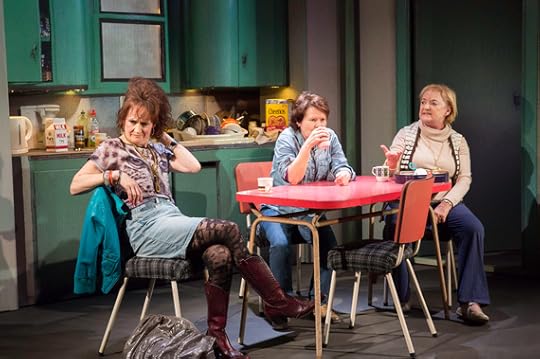
Photo by keanlanyon
A tough gritty drama about life for a single mother in the rough area of South Boston may not be the kind of production you'd expect to see on a London stage, let alone with Imelda Staunton in it, but Good People is such a phenomenally superb production that it stands out for all the right reasons.
At the centre of this show is an extraordinary performance from Imelda Staunton as Margie, a single mother battling to stay on the right side of the poverty line. She juggles a job at the dollar store with her responsibility as carer for her handicapped adult daughter. But this responsibility means she's persistently late for work and so, right at the start of the play, Margie is fired from her job for being unreliable.
The stakes are high - if she doesn't make rent, Margie and her daughter will be kicked out of their run-down apartment. So when Margie hears news that an old flame, Mike (Lloyd Owen), might be able to offer her a job, she decides to ask him for help - even though she hasn't seen him for over 20 years.
Only Mike's life is now a world away from her own. Mike grew up in Southie (South Boston) too, where he and Margie had a brief fling, but unlike Margie, Mike stuck at school, went to college, became a doctor and now lives in a posh suburban part of Boston, with his beautiful young wife Kate (Angel Coulby).
And so weaved into this plot are the themes of class divide, the haves and the have-nots, and the role that luck - both good and bad - plays in the hand that life deals us.
Margie's desperate attempts to find work reveal her chaotic mess of emotions, pressures and responsibilities. Determined to do whatever it takes, she's at times vulnerable, at other times as vicious as a viper. Staunton's ability to show the cracks in this mask, as well as the sudden repapering over of them, is phenomenal.
Imelda Staunton is superb, yes, but the acting throughout this cast is first class. June Watson and Lorraine Ashbourne shine as Margie's friends - though you would find scant comfort from them. They dole out only tough love. And Matthew Barker gives a beautifully sensitive performance as Stevie, the shy man caught up in the drama.
The quality runs all the way through this production directed by Jonathan Kent, who keeps the pace of the play tight though always allowing Margie's moments of vulnerability to just hang long enough for us to feel them.
The grit of Southie is perfectly realised in Hildegard Bechtler's urban stage design. And it creates a beautiful contrast with the gentle soft palette of creams and beiges of Mike's suburban life.
But it's the source material, the writing, that ensures this success. In Good People, David Lindsay-Abaire, the Pulitzer Prize winning playwright, spins a delicate web of deceit and desperation that twists and turns with every revelation.
Lindsay-Abaire used to live in South Boston and this knowledge of the people, their talk, their attitudes, their group mentality, is all beautifully reflected in the sharp, fast, straight-talking dialogue. Margie's community are all complex characters, outspoken and full of contradictions.
We're more used to seeing South Boston in Ben Affleck films so it's great seeing it used on a stage too. Class remains a divisive issue in British society yet there is also such a divide in American society between the wealthy and the poor so all the profound questions this American play asks are just as pertinent to us.
And the result is that Good People is unequivocally brilliant.
Hampstead Theatre, London
To April 5, 2014
Published on March 06, 2014 12:16
March 1, 2014
Donmar Warehouse Commemorates WWI Anniversary with Show on the Versailles Treaty
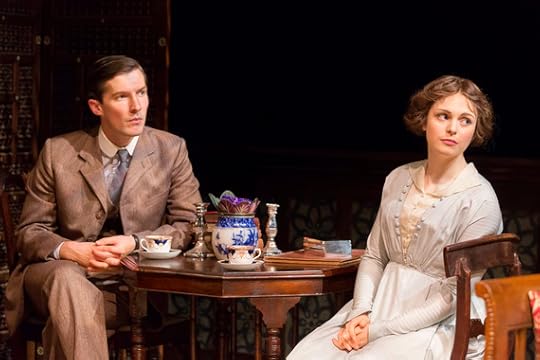
Not a play about the French monarchy, Versailles is an ambitious play from Peter Gill that dramatizes the controversial peace treaty that was signed in the French palace at the end of WWI.
In this 100 year anniversary of the Great War, it's perfect timing for theatre to take the opportunity to explore some of the issues around this world-changing event. And this production has certainly taken on a fascinating part of the story, where the want for revenge against Germany is mangled with the need to ensure that it is not punished so viciously as to destroy any chance of a lasting peace.
The framework to explore this is in the story of Leonard (Gwilym Lee), an educated middle-class gay man whose brilliance has led to his employment in the British government's negotiation team to be sent to Paris. Yet though Leonard's politics lead him to favour a sympathetic peace treaty, he is mourning the loss of his lover Gerald (Tom Hughes), who was killed in the trenches.
With any dramatization of real events, there's always the risk that facts may be massaged or even made up to suit the story, but not here. Versailles is certainly factually accurate, and there are most certainly a lot of facts.
Whether it's details on the prewar production of coal in the Saarland, the length of time till the agreed plebiscites in the region and in Poland, the Balfour declaration, the impact of returning soldiers on German politics, the collapse of Turkey, the American insistence on the set-up of the League of Nations, the politics of self-determinism, the self-interest of the British Empire, the carve-up of Africa.... Pretty much every fact you would need to know to pass a GCSE History paper question is here. Fascinating but it's this forensic analysis of the issues which hampers the emergence of an engaging storyline.
Versailles is written and directed by the incredibly talented Peter Gill and so I feel somewhat awkward in criticising his work - who am I to criticise someone with as much experience as him? But the plot of a gay man negotiating the peace whilst haunted - literally - by his dead lover is clunky.
And there is so little drama or conflict in this piece - Leonard is gay but everyone seems to know and no one seems upset or angry (which is a surprise, given the era), Leonard has left-wing principles but his Tory-leaning family and friends are largely sympathetic, and nor is there much tension in the scenes between Leonard and the ghost of his dead lover.
There is, though, much to admire in this production. The acting from a stellar cast (including Francesca Annis, Barbara Flynn, Adrian Lukis and Simon Williams) is superb throughout. A lot of the characters are quite clichéd - the principled educated middle-class man, the traumatised soldier returning from the trenches, the dyed-in-the-wool Tory villager, the young wilful modern woman - but each actor has shown great craft in developing their character, making them more than their stereotype.
There is the potential of a terrific production in Versailles but it never allows itself to set aside the details for the sake of the story. You get the impression that with a few more drafts, that balance between educating and entertaining would have been found.
As it is, the heavy exposition makes it too easy to zone out during the long three hour running time. And the time it robs away from character development means that, at the show's conclusion, I just wasn't moved by the tragedy of the subject, which was a shame.
Donmar Warehouse, London
To April 5, 2014
Published on March 01, 2014 03:37



